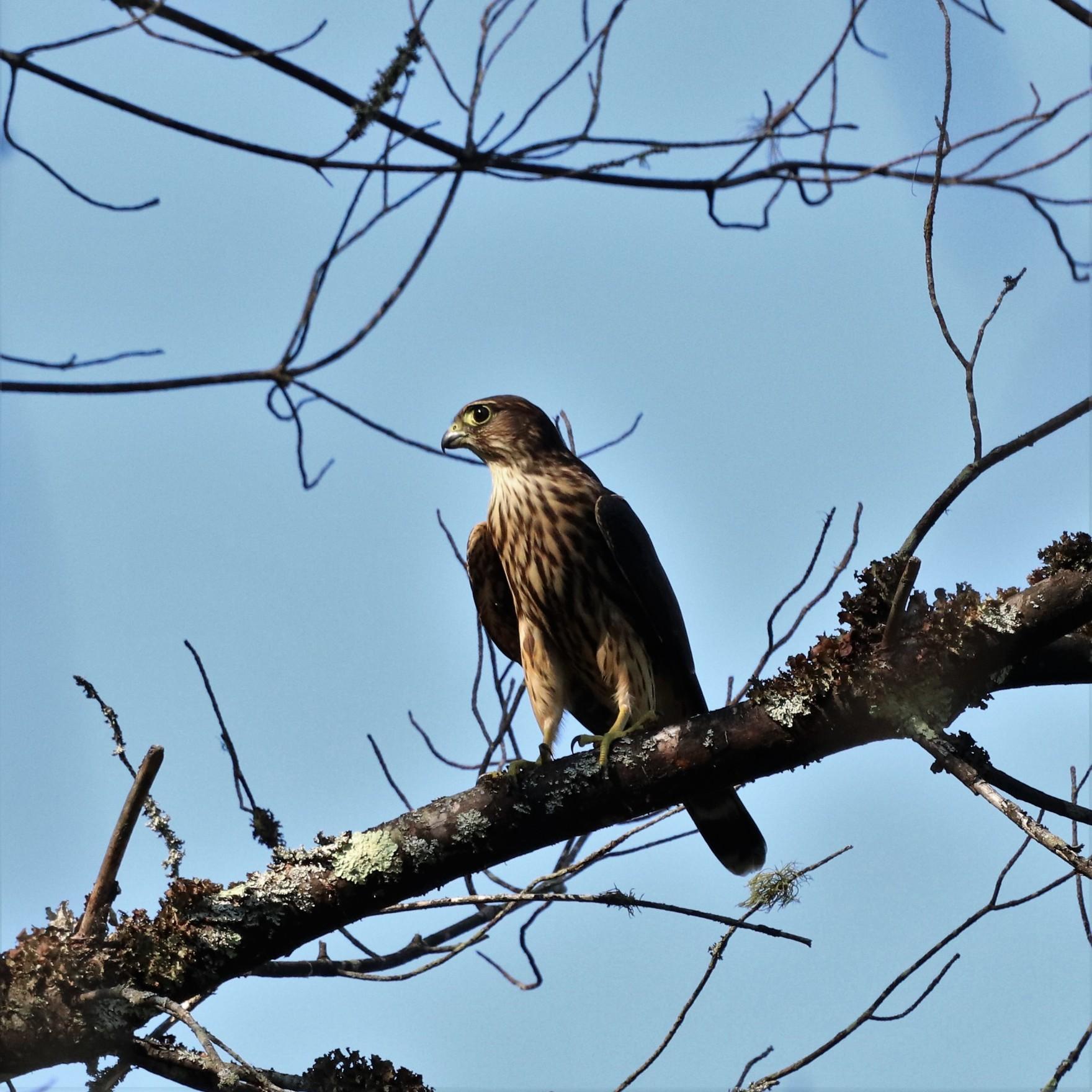- Tags:
- Wildlife,
- Something Wild

A female Merlin in September in New Hampshire. (Photo: Nance Masterson)
"Something Wild" is joint production of NH Audubon, The Society for the Protection of New Hampshire Forests & NHPR. We recommend listening to it in its original format via NHPR but a transcript of the show is also below. (Originally aired September 24, 2021)
You can hear Something Wild on-air at NHPR every other Friday at 6:45 a.m. and 8:45 a.m., or subscribe to the Apple podcast here.
----------------------------------------------------
It’s that time of year - the great migration! As summer draws to a close, many birds of prey, both young and adults, start moving south toward wintering grounds in the southern US or in the tropics, depending on the species.
The annual hawk migration is an opportunity to learn more about the birds on the wing overhead. Good places to go hawk-watching include Pack Monadnock in Miller State Park, or Mount Agamenticus in Maine.
You may not be familiar with the merlin, a small falcon that’s similar in size to the American kestrel, but that more closely resembles the larger peregrine falcon. Merlins used to be called “Pigeon Hawks” because in flight they look like a pigeon.
Males are steel blue, females are a bit larger and brown. Both are streaky on the breast and belly.
Merlins may be on smaller side but they are still fierce raptors. Medieval European noblewomen, including Catherine the Great and Mary Queen of Scots, used merlins for sport to hunt skylarks. Some European and North American falconers still work with merlins.
Like peregrines, merlins generally catch their prey while on the wing. They attack at high speed, horizontally or even from below, forcing their target upwards and away from cover until it tires. Besides warblers and other small birds, merlins often pick off large dragonflies and even small bats.
Merlin pairs sometimes team up to hunt large flocks of cedar waxwings: the first merlin attacks the flock directly, creating panic and confusion. Then the other merlin swoops in and picks off a distracted member of the flock.
Like other falcons, merlins don’t build their own nests. Instead they use old stick nests built by crows, often located in tall white pine trees. That means they might nest anywhere that you can find crows and big pines, including on golf courses, around cemeteries, and in city parks.
Generally thought of as a resident of northern spruce-fir forests, merlins have been rapidly expanding their breeding range south across New England over the past several decades.
It may be that they’re rebounding from the pesticide impacts of the 1960s and ‘70s.
Audubon Senior Raptor Biologist Chris Martin says that “in the early ‘90s you had to go to northern Coos County to find them nesting. Now they breed in every corner of N.H., in urban as well as rural areas, from Keene to Durham, and from Hanover to Conway, as well as in Pittsburg and Errol.” Look for them near openings provided by large lakes and rivers.
Merlins have been successful adapting to new territory, and urbanizing as other habitats decline. Their diet in urban settings includes house sparrows and starlings.
Martin describes being entertained by merlins this summer: “Recently I was lucky to have a pair nesting in a friend’s backyard. They're noisy! Every time the male would return to the nest area with freshly-caught prey, he would loudly announce his arrival to the incubating female. Once the three youngsters fledged from the nest in late July, flight training was on! The adults would fly around with food in their talons, dangling prey items just out of the reach of their frustrated young, forcing the juveniles to become better fliers? By mid-August it became oddly quiet, as the young dispersed and the adult pair finally got some much-needed time off!”
To learn more about merlins, check out The Cornell Lab of Ornithology’s free resource, All About Birds.
Something Wild is a joint production of NH Audubon, the Society for the Protection of NH Forests, and NHPR.
